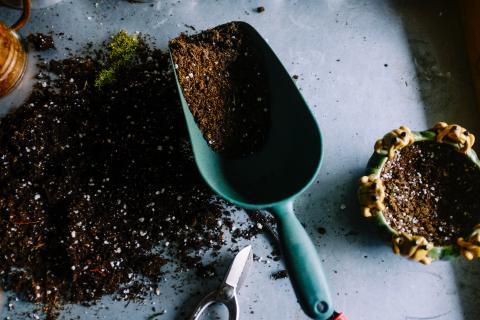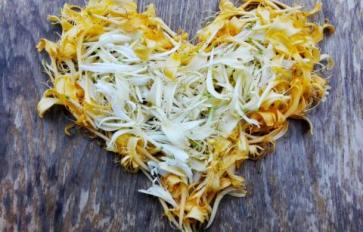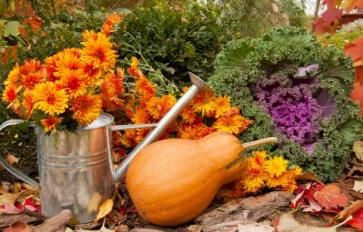
For those of us with a penchant for a green thumb, the soil can become a rather moody and mysterious being that flips out of control and destroys our work. To really get the best produce, you have got to decode soil, piece by piece…
Let’s begin with talking about what fertile soil actually is. For a lay gardener, fertile soil is one that gives you a great harvest and reduces pests and contamination. But ask any experienced gardener or farmer, and s/he is likely to quote that fertile soil is one that has “the living, the recently dead, and the very dead.”
Sounds complicated, but it isn’t. The living part of the soil refers to the plant roots as well as the microbes, earth worms, and other invertebrates and such that live in and off the soil by breaking down the organic matter in it. The recently dead are the deceased organisms and roots as well as the fresh manures—these tend to decompose quickly and rejuvenate the soil with nutrients. The very dead becomes what we call humus—which is the final residue left from the breakdown of organic matter and is very important for soil structure, pH levels, and disease control.
A truly fertile soil has all three forms of organic matter. Now here is where things begin to get a little complicated since all three organic matters are related to each other and the imbalance of any one becomes a snowballing problem for the others. Let’s imagine that we have a barren patch of soil that simply nothing wants to grow in. You could always scoop away this soil and buy fertile soil at a huge expense—or you could try and turn it fertile with a few hits and misses along the way. So let’s begin with the basics...
The Basics: Preparing The Soil
- Introduce Manures: Livestock manures, if used right, can be valuable additions to the soil for their fast-release nutrients make great food for plants and crops, as well as for the soil organisms around. However, since manure is not composted much, make sure at least three months pass between the application of manuring and the harvesting of any crops—particularly leafy vegetables or those that grow close to the ground. You cannot solely depend on manures though or the soil can become nutrient imbalanced. A once-a-year application of manure around the rainy season or just before the onset of snowy winters is great.
- Carry On Composting: Composting is no biggie—simply the recycling of garden and kitchen organic wastes. So in a way, composting puts back into the soil what crops take from it in the first place. If you find making compost tough and labor intensive, there is an easier way! You can try sheet composting (read our detailed article on sheet composting here) or even try your hand at putting your kitchen waste to better use. About 1-2cms of compost applied 2-3 inches into the soil should last you the whole season. Vermicompost manures are also great, and if you cannot make them, source them from organic nurseries instead at low costs.
Second Step: Planting
- Crop Rotation: Alternate every heavy-eating crop with a deep-mining one. Or alternate a nitrogen fixer with a nitrogen feeder. Crop rotation uses plants to further make the soil fertile instead of depleting it of essential minerals. Here’s a quick chart for you to see how to rotate crops in four years of planting—using four garden beds.
- Never throw away garden clippings: All the plants that die, the grass that you mow, the plants that have borne fruit and are now dying can become excellent compost material – you can pile it all in one corner, or simply line your garden beds with plant feed to use as green mulch.
Final Step: Protect The Soil
- Do Not Over-Till The Soil: Tilling is great, but do not keep tilling the soil for no rhyme or reason. Over-tilling a soil tends to do harm to benign soil organisms and ultimately upsets the delicate soil balance. The alternative to tilling is mulching!
- No Bare Soil: Bare soil will make you want to till it, but that will make it leach important nutrients. Mulching is a great way to protect the soil and lock in the nutrients, so to speak. Just make sure to use an organic mulch!
More Tips For Fertile Soil
- Grow Cover Crops: If you are letting a patch stay unplanted, use it to grow a cover crop that you can freshly kill and then till in for more organic matter. Think grasses, clovers, beans, and peas. With beans and peas, harvest and then till in to return valuable nutrients to the soil.
- Use That Grass: Never throw away grass clippings for that is a true crime against sustainability. Use clippings as mulch or add them to compost.
- Use permanent beds and paths. Restrict foot traffic to the pathways to prevent damage to crops and soil and plant as closely as possible in the beds. Also while sowing, plant everything close. Close planting shades the soil surface and helps in conserving moisture and moderating temperature extremes.
- Finally When All Else Fails, Try Rock Dust: Rock dust is not a true fertilizer since it does not boast of the N:P:K (nitrogen, phosphorus, and potassium) ratio. Instead, rock dust is basically pulverized igneous rocks that are rich in minerals like basalt and granite. It helps add nutrients like calcium, iron, and manganese to the soil and its slow release helps sustain the soil for years.
We leave you with happy thoughts of soil, produce and even geosmin – the fragrance of rain-drenched soil because not only is gardening good for the kitchen, it’s great for you and your soul! Oh, and did you know that some plants can even clean up the contaminated soil?








